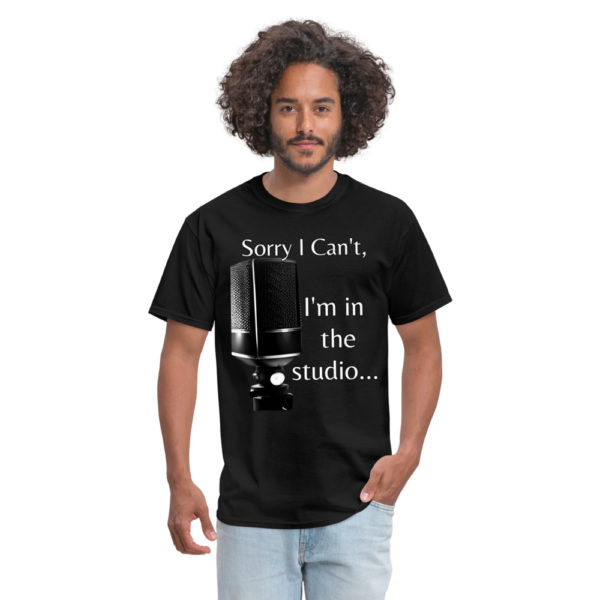Your cart is currently empty!
Tag: beatboxing
🔥 Breathe Life Into Your Music: Mastering Circular Breathing for Musicians and Singers! 🎶
Have you ever wondered how some musicians seem to create an endless stream of sound without ever pausing? Or how vocalists can hold long, soulful notes that captivate audiences? Welcome to the fascinating world of circular breathing—a technique that unlocks continuous airflow, giving musicians and singers a unique edge in performance. In this post, we’ll dive into what circular breathing is, explore its benefits and drawbacks, and look at its historical roots alongside modern-day applications. Whether you’re a seasoned performer or just curious about expanding your vocal or instrumental skills, this guide is packed with up-to-date, accurate insights to help you elevate your art. If you enjoy what you read, please comment below and share with fellow music lovers!
What Is Circular Breathing? 🌬️
Circular breathing is a specialized technique that allows you to maintain an uninterrupted flow of air while playing a wind instrument or singing. Instead of taking a break to breathe normally, you learn to breathe in through your nose while simultaneously pushing stored air from your cheeks out through your mouth. This continuous airflow means that you can sustain long, flowing notes and even intricate phrases that would otherwise be impossible with standard breathing.
For many wind instrument players, such as those playing the saxophone, flute, or didgeridoo, circular breathing is a game-changing skill. It empowers them to extend phrases and create a seamless, ethereal sound that keeps audiences enchanted. Likewise, singers and beatboxers have also adopted this technique to experiment with new vocal textures and effects, pushing the boundaries of what’s possible with the human voice.
How Does Circular Breathing Work? 🔄
The beauty of circular breathing lies in its blend of simplicity and complexity. At its core, the process involves three key steps:
- Air Storage: Begin by filling your cheeks with air, creating a small reservoir that will hold your extra breath.
- Simultaneous Actions: While exhaling to produce sound through your instrument or vocal cords, you gently suck in air through your nose.
- Smooth Transition: The stored air in your cheeks bridges the gap, ensuring that the sound continues without interruption.
By practicing this coordination repeatedly, you can train your body to perform these actions almost automatically, turning circular breathing into a reliable part of your musical toolkit.
Benefits of Circular Breathing for Musicians and Singers 🎷✨
Circular breathing offers a host of advantages, especially for those in the music and singing realms. Let’s break down some of the most significant benefits:
1. Uninterrupted Sound
- Endless Notes: Imagine playing or singing without ever having to stop for a breath. This continuous sound can create mesmerizing musical passages that hold the audience’s attention.
- Extended Phrasing: Musicians can extend their phrases beyond the natural limits of a single breath, making it easier to express intricate musical ideas.
2. Enhanced Musical Expression
- Dynamic Control: By removing the interruption of regular breathing, you can focus more on the nuances of your performance—whether it’s a gentle diminuendo or a powerful crescendo.
- Creative Experimentation: Singers and instrumentalists alike can experiment with layering sounds, creating unique effects that add depth and texture to their performances.
3. Improved Respiratory Strength
- Stronger Lungs: Regular practice of circular breathing strengthens the respiratory muscles, which can improve overall lung capacity and stamina.
- Better Breath Control: This technique teaches you how to manage your airflow more efficiently, leading to better control over both soft and loud passages in your music.
4. Versatility Across Genres
- Classical to Contemporary: From classical wind instruments to modern experimental music and vocal improvisation, circular breathing is adaptable to various musical styles.
- Innovative Performances: Many contemporary musicians and singers use circular breathing to add an element of surprise and innovation to live performances, making each show a unique experience.
Drawbacks and Challenges ⚠️
Despite its numerous benefits, circular breathing comes with some challenges that performers should be aware of:
1. Steep Learning Curve
- Initial Frustration: Coordinating simultaneous breathing actions can be difficult and may require significant practice before it feels natural.
- Time-Consuming: Mastery of circular breathing often takes months, or even years, of dedicated practice. It’s a skill that demands patience and persistence.
2. Physical Strain
- Muscle Fatigue: The extra effort required to maintain the technique can lead to tiredness in the facial and respiratory muscles, especially in the beginning.
- Risk of Overexertion: Without proper guidance, you might overwork your muscles or develop inefficient breathing habits that could hinder rather than help your performance.
3. Limited Application
- Niche Technique: While incredibly useful for wind instrument players and certain vocalists, circular breathing may not be essential for every type of musician or singer.
- Specialized Skills: The technique is most beneficial for those whose performance relies on sustained sound production. For others, traditional breathing methods might suffice.
Historical Roots of Circular Breathing ⏳
Circular breathing is not a modern invention; its origins stretch back centuries, with roots in various cultures and traditions.
Ancient Musical Traditions
- Indigenous Cultures: Many indigenous peoples have long employed circular breathing in their musical practices. For example, Aboriginal Australians use the technique to play the didgeridoo, producing the instrument’s distinctive drone that resonates with ancient rhythms and ceremonial significance.
- Eastern Musical Practices: In parts of Asia, traditional wind instruments used in folk and classical music required sustained, continuous notes. Musicians in these regions refined circular breathing as an essential skill to deliver the fluidity and continuity inherent to their musical traditions.
Modern-Day Circular Breathing: Who Uses It Now? 🚀
Today, circular breathing is widely used by a diverse group of performers, including both musicians and singers. Let’s take a closer look at some notable examples:
1. Wind Instrumentalists
- Saxophonists and Flutists: Many jazz and classical musicians have integrated circular breathing into their performance techniques. This allows them to deliver extended solos and sustain notes that create a seamless auditory experience.
- Didgeridoo Players: Modern didgeridoo players, both in Australia and around the world, continue to harness this ancient technique to produce the instrument’s iconic continuous drone.
2. Vocalists and Beatboxers
- Singers: Some innovative vocalists use circular breathing to push the limits of their performance. By sustaining long notes without interruption, they add a dramatic flair to ballads and experimental tracks.
- Beatboxers: In the world of beatboxing, where creating complex rhythms and layered sounds is key, circular breathing is a valuable tool. It allows artists to keep the beat going continuously, often turning their performance into an intricate showcase of vocal dexterity.
3. Contemporary Musicians and Performers
- Experimental Artists: A new wave of musicians is blending traditional instruments with modern technology. These artists often use circular breathing to create unique soundscapes that blend the organic with the digital.
- Fusion Genres: Musicians who cross the boundaries between genres—such as jazz fusion, world music, and even hip-hop—find that circular breathing offers them a new palette of expressive possibilities.
Practical Tips for Mastering Circular Breathing 🎯
If you’re excited to incorporate circular breathing into your musical or vocal practice, here are some actionable tips to get you started:
1. Start With the Basics
- Practice Without Your Instrument: Begin by practicing the technique on its own. Try to focus on the mechanics of filling your cheeks with air and coordinating the simultaneous inhalation and exhalation.
- Use a Mirror: Watching your face in a mirror can help you see if you’re using your cheeks correctly to store air.
2. Gradual Integration
- Short Sessions: Begin with short practice sessions to avoid muscle fatigue. Gradually increase the duration as you become more comfortable with the technique.
- Focus on Rhythm: Pay attention to the rhythm of your breathing. Consistency is key, so try to maintain a steady flow of air throughout your practice.
3. Learn From Others
- Online Tutorials and Workshops: There are many instructional videos and courses available that can provide step-by-step guidance on circular breathing. Learning from experienced performers can accelerate your progress.
- Join a Community: Engage with fellow musicians and singers who are also exploring circular breathing. Sharing tips and experiences can be incredibly motivating.
4. Be Patient and Persistent
- Embrace the Learning Curve: Remember, mastering circular breathing takes time. Celebrate small victories and be patient with yourself as you navigate this complex technique.
- Stay Consistent: Regular practice is essential. Even 10 minutes a day can lead to noticeable improvements over time.
Final Thoughts: Elevate Your Performance With Every Breath 🌟
Circular breathing is more than just a technical skill—it’s a pathway to unlocking new realms of musical expression. For musicians and singers, this technique offers the opportunity to push past traditional limits, enabling you to create performances that are both innovative and deeply moving. Whether you’re playing a saxophone solo that flows endlessly or singing a ballad with sustained, haunting notes, circular breathing can be the key to capturing your audience’s imagination.
As you embark on your journey with circular breathing, keep in mind that every expert started as a beginner. With practice, patience, and passion, you too can master this technique and bring a fresh, vibrant energy to your music. What are your experiences with circular breathing? Do you have tips or stories to share? Please drop a comment below and share this post with friends and fellow musicians. Let’s build a community where creativity and continuous innovation thrive!
I Can’t | Music Studio Unisex Classic T-Shirt
$19.99I Can’t | Music Studio Unisex Classic T-Shirt. Show off your passion for music with the “I Can’t | Music Studio” Unisex Classic T-Shirt. Designed for musicians, producers, and music lovers, this comfortable tee is perfect for studio sessions, casual outings, or expressing your creative vibes.
Thank you for reading this ultimate guide on circular breathing. Embrace the flow, keep practicing, and let your music breathe life into every performance!
-

Hungry and Humble Football Player Flapping Arms Touchdown Celebration Unisex Classic T-Shirt #philly
$19.99 Select options This product has multiple variants. The options may be chosen on the product page -

Africatown in Philly Phrase Unisex Classic T-Shirt
$13.99 Select options This product has multiple variants. The options may be chosen on the product page -

Vintage Funny Cat Selfie UFO Alien Invasion Unisex Classic T-Shirt
$13.99 Select options This product has multiple variants. The options may be chosen on the product page -

Vintage Philly Underdogs German Shepherds Unisex Classic T-Shirt
$9.99 Select options This product has multiple variants. The options may be chosen on the product page -

Never Forget Pennies Unisex Tie Dye T-Shirt
$19.99 Select options This product has multiple variants. The options may be chosen on the product page
————————————————
We use AI GPT Chatbots to help with our content and may get some things wrong.
————————————————-


